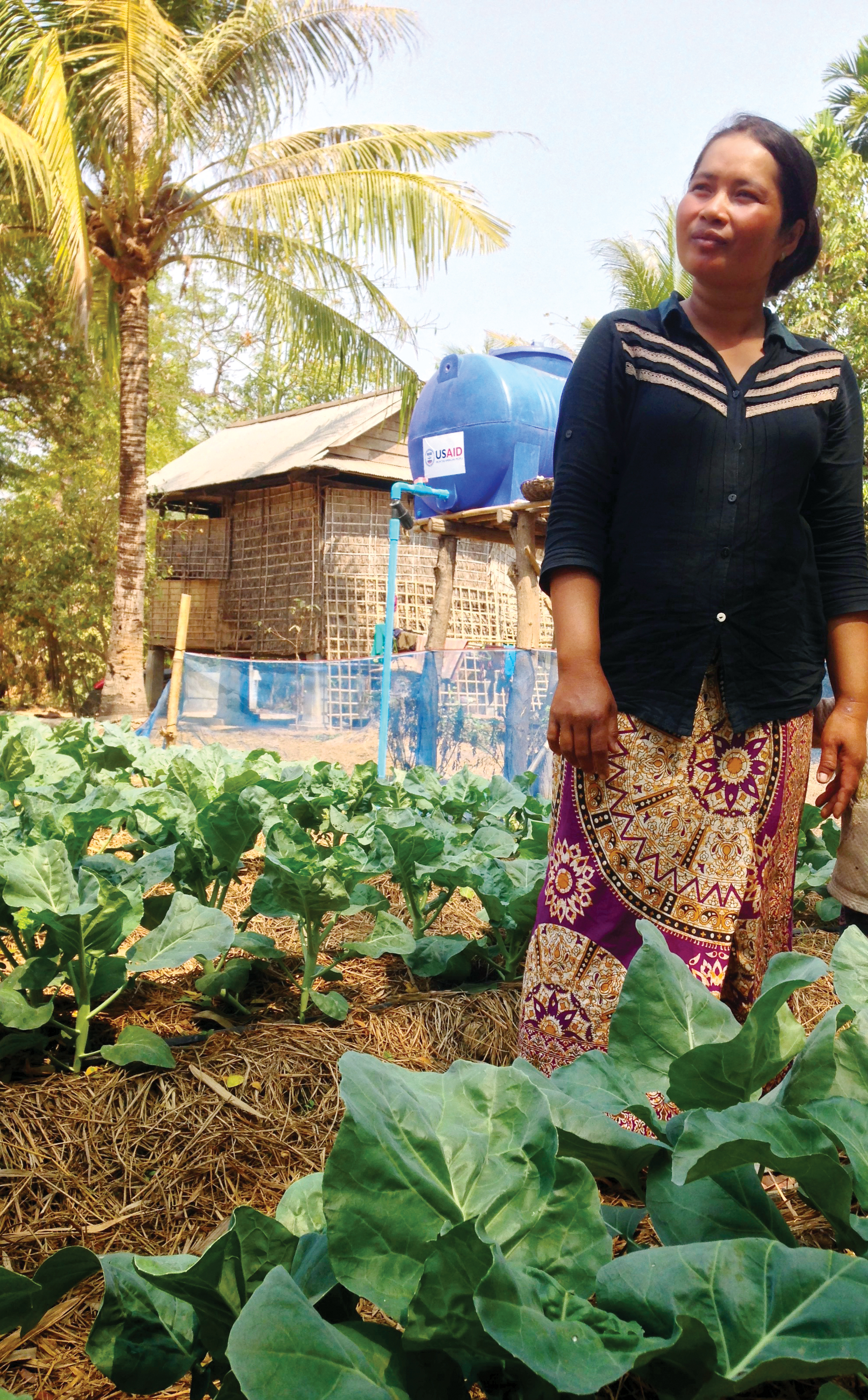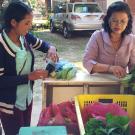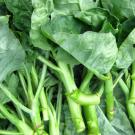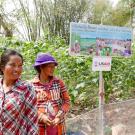
Horticulture crop production, a woman's domain in parts of Southeast Asia, is plagued by yield losses because of drought and unequal opportunities for women. Among many horticultural technologies, drip irrigation has demonstrated that it can replace time-consuming tasks of hand irrigation and fertilization, while increasing yield, reducing pest problems, and saving water. When targeted at women, drip irrigation has also been found to increase women's productivity and income, and to enhance their welfare by reducing drudgery, decreasing workload, improving health, and saving time for other practical needs — all of which empowers them with stronger voices in their families and communities.
The project is located in Siem Reap, Cambodia, near the world-famous Angkor Wat temples. Fifteen women were provided with drip irrigation systems; yields and labor are monitored for both drip and non-drip trials. The participating women chose the vegetable crops for the field experiment and market the vegetable yields to tourism establishments in the area.
Updates:
- Success story PDF: Fact sheet: Reducing drudgery, improving soil for vegetable farmers
- Feed the Future newsletter article: Conservation Agriculture Reduces Time and Labor for Women in Cambodia
- Poster from 2014 annual meeting: Vegetable production in drip irrigation and conservation agriculture for the disadvantaged women of Siem Reap, Cambodia (PDF)
- Flier from 2014 annual meeting: Vegetable production in drip irrigation... (PDF)
- "In Cambodia, female farmers gain new skills" article in Virginia Tech newsletter



